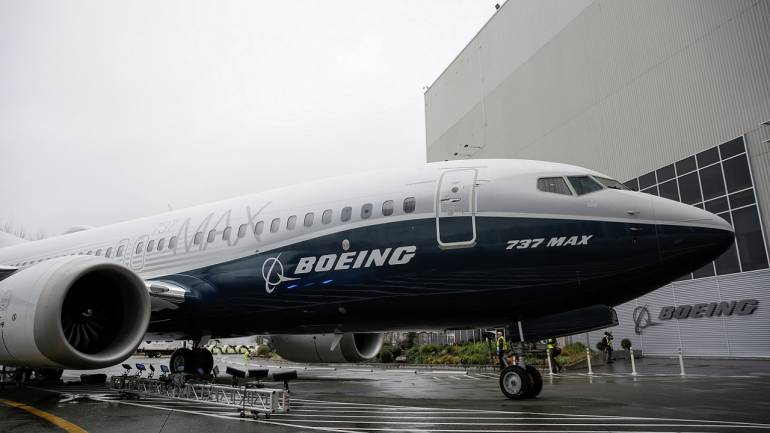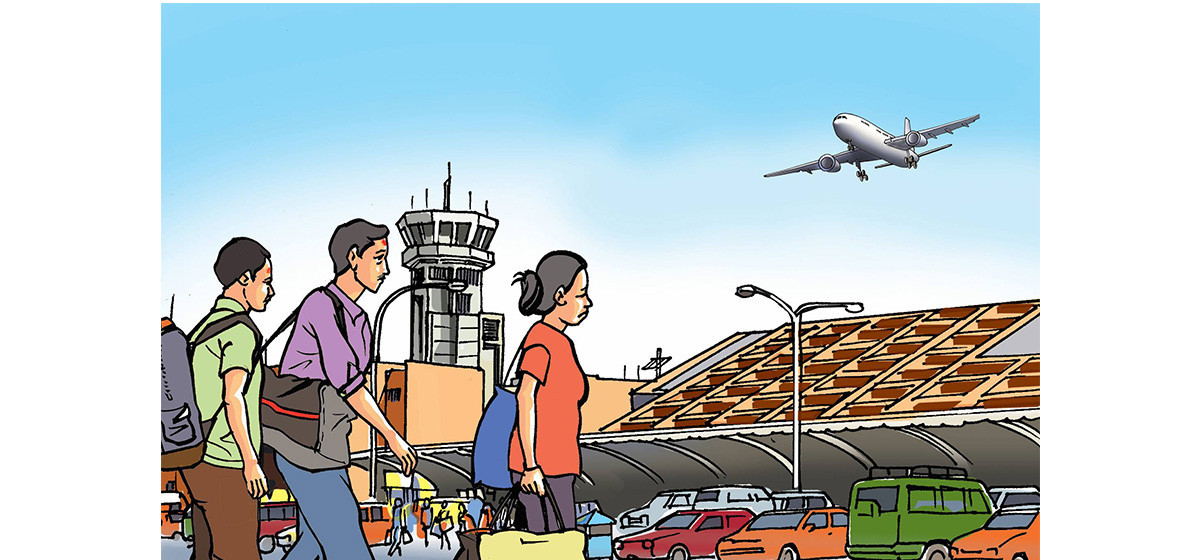
OR
Boeing knew about 737 Max aircraft problems months before deadly Lion air crash
Published On: May 6, 2019 12:00 PM NPT By: Agencies

American multinational aircraft manufacturing company Boeing knew that their 737 Max aircraft was experiencing problems months before the deadly Indonesia Lion Air crash last October but failed to disclose the issue to federal regulators until after the incident.
In a statement released on Sunday, Boeing admitted they became aware that the aircraft’s “display system software did not correctly meet the AOA Disagree alert requirements” in 2017, many months before the Indonesia crash in October and the Ethiopia crash in March, which collectively killed 346 people.
“The Boeing design requirements for the 737 MAX included the AOA Disagree alert as a standard, standalone feature, in keeping with Boeing’s fundamental design philosophy of retaining commonality with the 737NG. In 2017, within several months after beginning 737 MAX deliveries, engineers at Boeing identified that the 737 MAX display system software did not correctly meet the AOA Disagree alert requirements," the company said.
“The software delivered to Boeing linked the AOA Disagree alert to the AOA indicator, which is an optional feature on the MAX and the NG. Accordingly, the software activated the AOA Disagree alert only if an airline opted for the AOA indicator.”
It is unclear whether the warning light would have prevented the Lion Air or Ethiopian Airlines crashes, however, Boeing asserted that “neither the angle of attack indicator nor the AOA Disagree alert are necessary for the safe operation of the airplane.” “They provide supplemental information only, and have never been considered safety features on commercial jet transport airplanes,” the company explained.
After they discovered a discrepancy between the requirements and the software, Boeing said it “followed its standard process for determining the appropriate resolution of such issues.” A subsequent review “determined that the absence of the AOA Disagree alert did not adversely impact airplane safety or operation,” according to the company.
“The review concluded, the existing functionality was acceptable until the alert and the indicator could be delinked in the next planned display system software update,” Boeing said, adding that senior leaders within the company were not informed of the review and only found out about the problem “in the aftermath of the Lion Air accident.”
Boeing revisited the issue in December 2018 by convening a Safety Review Board (SRB) to determine for the second time whether the absence of the AOA Disagree alert would amount to a safety issue, according to the company. “That SRB confirmed Boeing’s prior conclusion that it did not. Boeing shared this conclusion and the supporting SRB analysis with the FAA,” the company said in the statement.
A Federal Aviation Administration spokesperson confirmed that Boeing alerted them of the non-functioning warning light in November, shortly after the Indonesia Lion Air crash, which occurred the previous month. FAA employees determined that it presented a low risk, the spokesperson said in a statement, reported KTLA-5, before noting that “Boeing’s timely or earlier communication with (airlines) would have helped to reduce or eliminate possible confusion.”
You May Like This

Boeing cuts 737 MAX output in wake of two deadly crashes
CHICAGO/SEATTLE, April 6: Boeing Co said on Friday it plans to cut its monthly 737 aircraft production by nearly 20... Read More...

Amazon confirms two employees in Italy have contracted coronavirus
WASHINGTON, March 2: Amazon.com Inc said late on Sunday that two employees in Milan, Italy, have contracted the coronavirus and... Read More...

Boeing CEO eyes major aircraft order under any U.S.-China trade deal
EVERETT, Aug 28: Boeing Co said on Tuesday that an aircraft order from China could result from any deal to... Read More...





Just In
- Godepani welcomes over 31,000 foreign tourists in a year
- Private sector leads hydropower generation over government
- Weather expected to be mainly fair in most parts of the country today
- 120 snow leopards found in Dolpa, survey result reveals
- India funds a school building construction in Darchula
- Exploring opportunities and Challenges of Increasing Online Transactions in Nepal
- Lack of investment-friendly laws raises concerns as Investment Summit approaches
- 550,000 people acquire work permits till April of current fiscal year













Leave A Comment